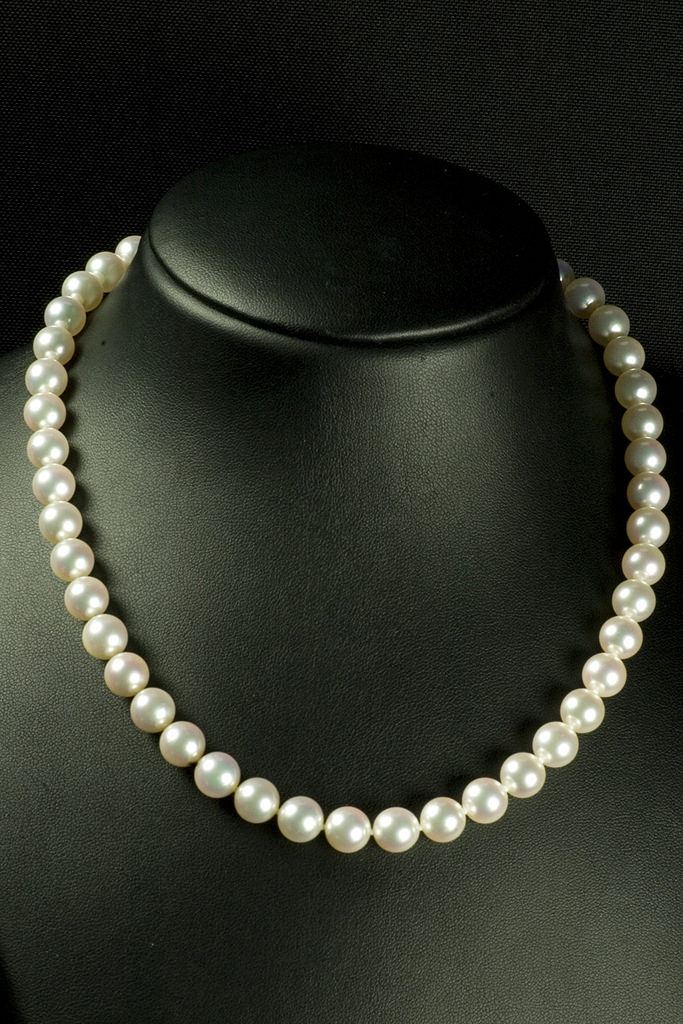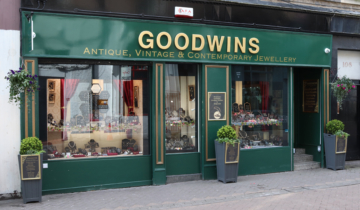This website uses cookies so that we can provide you with the best user experience possible. Cookie information is stored in your browser and performs functions such as recognising you when you return to our website and helping our team to understand which sections of the website you find most interesting and useful.
GOODWINS’ GUIDES: Pearls
Pearls
Creamy or colourful, smooth or nubby, pearls are always beautiful and always correct. But where do they come from, and how should you care for these precious beauties?
Pearls are the only gem created inside a living organism. In salt water they are born inside oysters, while freshwater pearls come from mussels. Early freshwater pearls were known as “Rice Pearls”, because of their resemblance to the grain, but the past 10-15 years have seen wonderful advances. These days, it can be difficult to tell the difference between cultured freshwater or saltwater pearls because refinements mean most freshwaters are now perfectly round, with a really good lustre.
Cut a real pearl in half and you’ll see a tiny little irritant, such as an insect or a grain of sand. That is the origin of your pearl, the interloper that stimulates the mollusc to surround it in layers of nacre. With cultured pearls the irritant — usually a wee piece of mother-of-pearl, or a bead — is introduced manually. The bigger the pearl, the longer it’s been growing, but some cultured pearls have only a thin coating of nacre.
Why would you care whether a pearl came from fresh or salty water? Partly, it’s an issue of quality. Freshwater pearls are much faster growing, and even a pearl cultured in salt water is of higher quality than its freshwater counterpart.
Real pearls weigh more than cultured pearls of the same size because they’re solid — and this is also why they’re so much more expensive. You might have an individual pearl worth £3000. A freshwater equivalent of the same size might be worth around 30 pence, and the saltwater pearl is worth in the region of £130. Yet to look at them, if you don’t know, they seem identical.
The only 100% reliable way to ensure that your pearls are real is to have them x-rayed. But a seasoned jeweller works from a set of reliable indicators, including weight, as noted above. Another tip-off is that drill holes for real pearls tend to be much smaller.
We have also seen painted beads posing as pearls. They are made of plastic that’s been thinly coated with pearlescent paint.
Officially, a “row of pearls” measures 16”. Prices range from £20 for a row of freshwater pearls to £20,000 a row for the Tahitian pearls from the South Seas.
Pearls are what we call ‘Bread and Butter’ jewellery. You can wear them at hatches, matches and dispatches. They are never too dressy or too casual, and they’re as effective paired with jeans and a tee shirt, as they are accessorising a smart little black dress.
Pearls are highly tactile. It’s hard to stop stroking them. If you wear yours a lot — say several times a week — then the silk the beads are strung on will stretch, and you will get a gap. The biggest threat is if the silk breaks and you lose one. That’s why we always recommend getting them strung with knots between each bead. Then, if the worst happens, you only lose one pearl.
Get your pearls looked at once a year, to ensure that the silk is safe.
Pearls should be the last thing you put on, and that includes hairspray and makeup. They are very sensitive to the atmosphere, and very porous. They soak up whatever is in the air around them. Don’t wear them in the shower or swimming (chlorine can turn them green). Be gentle with them.
Store your pearls in a pouch (felt, velvet) inside your jewellery box.
Pearls can be difficult to clean. If you wear them a lot, oil from your skin can build up between the beads. There is nothing you can do about that. Every few years, when you take them to be restrung, your jeweller will clean each bead thoroughly. Between these “pit stops,” run a soft damp cloth over your pearls. If you really want to get in between the beads, use a cotton bud or a damp cloth. Do not use chemicals or soap.
Yes, pearls need looking after, but overall they are not that high maintenance. Wear and enjoy them. Some say the more you wear pearls, the better their lustre. We haven’t seen the evidence for this, but let’s face it, jewellery this versatile, and this beautiful, deserves to be admired by your adoring public.
GOODWINS’ GUIDE TO BUYING PEARLS
1. Set your budget. This is a sensitive issue, but there is no point in being coy. We need guidance. Know your price-range and communicate it to your trusted jeweller. Decide if you’re buying occasion-wear, or everyday pearls.
2. Do you want a single or a multi-strand necklace? Visualise what you want your pearls to look like. The three row choker is a classic look, and you can find one for about £600. A single 18” strand of real pearls, graduated in size, could run around £2,500 to £3,000. (Another good question to ask yourself is: Do you want graduated or uniform-sized pearls? Current fashion favours uniform pearls.)
3. What kind of clasp do you want? One that’s for show, which can be worn to the front or the side, or one that blends into the background? A fancier clasp — especially if it’s set with diamonds or other gems — will boost the price of your pearls.
4. What colour of pearls do you want? Traditional white? Black, bronze? (Most coloured pearls are dyed by injecting pigment into the mollusc, though some are dyed afterwards. A completely natural coloured pearl is rare, indeed.)










